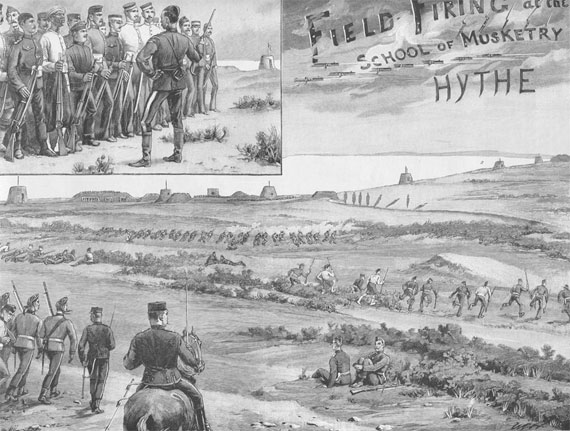|
CFS PRESS
|
|
Shock Troops of the Confederacy
|
|
|
|
|
| Operational Requirements for an INFANTRY HAND WEAPON |
|
The issue of the average range at which opposing forces engage each other on the battlefield has occupied both soldiers and historians for some time. For soldiers it directly influences the design of weapons and tactics, and provides historians with something else to argue about. British historian and military pundit Paddy Griffith addressed the issue in his influential 1986 book Battle Tactics of the Civil War, in which he refuted the notion that the new weapons of the Civil War caused a quantum leap in casualties. He went further, however, by then analyzing battle engagement ranges and concluding that they had not essentially changed from those of the Napoleonic wars, that therefore "Napoleonic warfare" was still possible in the American Civil War, and that the first "modern" war was the Franco-Prussian War of 1870-71. Other historians have adopted this view, notably Earl Hess in his recent book The Rifle Musket in Civil War Combat: Reality and Myth.
|
 |
The US Army (and most other major armies) has looked into the issue as well.
While looking for some material on the subject I came across a study the Army conducted in late 1950s (once classified Secret) that takes a detailed look at American conflicts all the way back to the Civil War to determine average combat ranges. The authors also try to determine why combat ranges fell out as they did and what hit probabilities were for various ranges in different types of terrain. Research included interviews with veterans of WWII and Korea, and a sophisticated map analysis of sight distances.
Getting a good copy of this study wasn't easy. I won't bore you with the details, but I had to file an FOIA request, pay a good chunk of change for copying fees, then run it through OCR. I'm posting this as a free download and may post some other material as well, but my resources are limited.
|
|
|
So…if you find this study of interest and a worthwhile addition to your library, please consider dropping a few bucks in the tip jar, which will fund further efforts on my part. Any donation will help.
|
"Operational Requirements for an Infantry Hand Weapon"
Hitchman, Norman A.; Forbush, Scott E. ; Blakemore George J., Jr.
NOV 1960
Abstract: The capabilities of the infantry rifle were explored. Data were obtained on the frequency and distance by which riflemen missed targets, and the distribution of hits at different ranges; the ranges of engagement in battle; and the physiological wound effects of shots with differing ballistic characteristics. A study of the data led to the following conclusions: (1) Hit effectiveness with the M-1 rifle is satisfactory only up to 100 yds. and declines rapidly to low order at 300 yds., the general limit for battlefield rifle engagements; (2) a pattern-dispersion principle in the hand weapon would tend to compensate for human aiming errors and increase hits at ranges up to 300 yds.; and (3) missiles with smaller caliber than standard could be used without loss in wounding effects and with logistical advantage; and (4) hit lethality could be greatly increased by using toxic missiles.
Click links below for Complete Reports in PDF format
|
|
CFS Press Copyright 2010
|
|
|